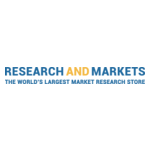- DHL
Global Trade Barometer forecasts air trade to remain at a steady high level, with
mild growth for ocean freights - The
country's growth is driven primarily by trade in High Technology, Basic Raw
Materials, as well as Personal & Household Goods
�
SEOUL, KOREA -�Media
OutReach�-�5 October 2018 - South Korea's trade growth is expected
to continue despite a slight decrease of five points on the DHL Global Trade Barometer released by DHL, the
world's leading logistics company. The country's overall index stands at 69
points, the second highest of the four Asian countries surveyed.

�
The DHL Global Trade Barometer, an early indicator of
global trade developments calculated using Artificial Intelligence and Big
Data, predicts air trade
in South Korea
will remain steady at 73 points due to strong exports of High Technology, Basic Materials, and Machinery
Parts -- as well as imports of Industrial Raw Materials and Machinery Parts. Ocean
imports are also expected to perform well, mainly fueled by Basic Raw
Materials, Chemical & Products as well as Personal & Household Goods.
�
"South Korea's major industries continue to underpin
global innovation in technology: exports of memory chips, for example, jumped
31.5% from the year before to help fuel an 8.7% increase in the country's
exports in August[1],"
said SP Song, Managing Director, DHL Global Forwarding Korea. "The government has also just
proposed a 2019 budget of 471 trillion won (US$420 billion) -- the highest
increase in 10 years -- with a focus on amplifying employment and innovation, contributing
to our positive trade outlook in the months to come.[2]"
�
The Barometer's results
also suggest that despite intensifying global trade disputes, mainly
between China and the US, world trade is expected to grow
over the next three months albeit at a slower pace. The growth outlook looks
positive for all Asia Pacific countries with India leading the ranks, along
with optimistic outlooks for South Korea, China, and Japan. This is testament
to the Asian economy's resilience, especially in the areas of technology and
manufacturing. In the Global Trade Barometer methodology, an index value above
50 indicates positive growth, while values below 50 indicate contraction.
�
Developed
jointly by DHL and Accenture, the DHL Global Trade Barometer provides a quarterly outlook on future trade, taking
into consideration the import and export data of seven large economies: China,
South Korea, Germany, India, Japan, the United Kingdom, and the United States.
Together, these countries account for 75 percent of world trade, making their
aggregated data an effective bellwether for near-term predictions on global
trade. The DHL Global Trade Barometer, which assesses commodities that serve as
the basis for further industrial production, predicts that global trade will
continue to grow in the next three months, despite slight losses in
momentum.
�
DHL -- The logistics company for the world
�
DHL is the leading global brand in the logistics industry. Our DHL family
of divisions offer an unrivalled portfolio of logistics services ranging from
national and international parcel delivery, e-commerce shipping and fulfillment
solutions, international express, road, air and ocean transport to industrial
supply chain management. With about 360,000 employees in more than 220
countries and territories worldwide, DHL connects people and businesses
securely and reliably, enabling global trade flows. With specialized solutions
for growth markets and industries including technology, life sciences and
healthcare, energy, automotive and retail, a proven commitment to corporate
responsibility and an unrivalled presence in developing markets, DHL is
decisively positioned as "The logistics company for the world".
�
DHL is part of
Deutsche Post DHL Group. The Group generated revenues of more than 60 billion
euros in 2017.
[1]https://www.businesstimes.com.sg/government-economy/south-koreas-august-export-rise-for-second-month-but-miss-forecasts
[2] https://www.bloomberg.com/news/articles/2018-08-28/south-korea-plans-biggest-budget-increase-in-10-years









